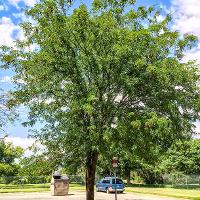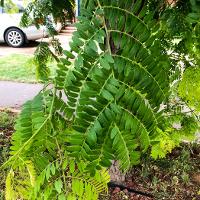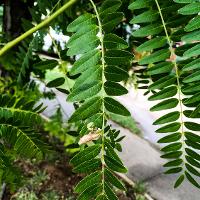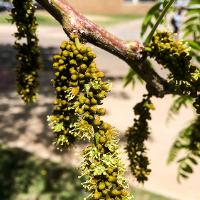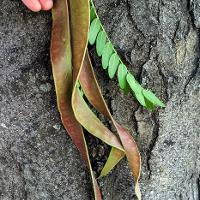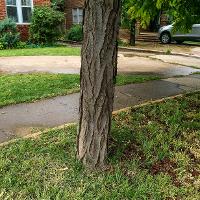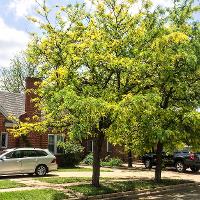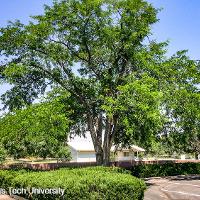Honey Locust
Gleditsia triacanthos var. inermis
Deciduous-Trees
(Detailed plant information can be found at the bottom of the page.)
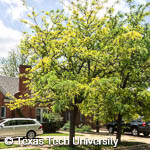
Gleditsia triacanthos var. inermis Photo Gallery
Gleditsia triacanthos var. inermis Plant Information
| Classification | |
|---|---|
| Scientific Name: | Gleditsia triacanthos var. inermis |
| Common Name: | honey locust |
| Family: | Fabaceae |
| Suggested Uses: | large tree for filtered shade |
| Characteristics | |
| Height: | usually 30 - 70 feet tall; variable |
| Foliage: | deciduous, alternate, pinnate or bipinnately compound with 20 to 30 leaflets leaflet is entire and may have small notch at tip of leaflet can have good yellow Fall color; may drop leaves early |
| Fruit: | dark brown pod up to 15” long and 1” wide usually has an irregular twist |
| Bark: | greyish brown on older trees smooth with long, narrow, longitudinal ridges with fairly deep ridges |
| Environment | |
| USDA Zone: | zones 4 - 9 |
| Care | |
| Maintenance: | thorns and pods create maintenance problems straight species has large thorns; variety inermis is thornless ‘Shademaster' and ‘Sunburst' are common fruitless cultivars large trees have been known to fall over |
| Pests & Pathology: | numerous disease (leaf spots, cankers) and insect (web worms, borers) problems root rot is becoming more of an issue |
| Additional Notes: | once thought to be the tree to replace Ulmus Americana, but has been overused and now is suffering from monoculture problems |
TTU Plant Resources
-
Address
Texas Tech University, Department of Plant and Soil Science, Box 42122, Lubbock, TX 79409 -
Phone
806.742.2838 -
Email
Melanie.Jackson@ttu.edu

